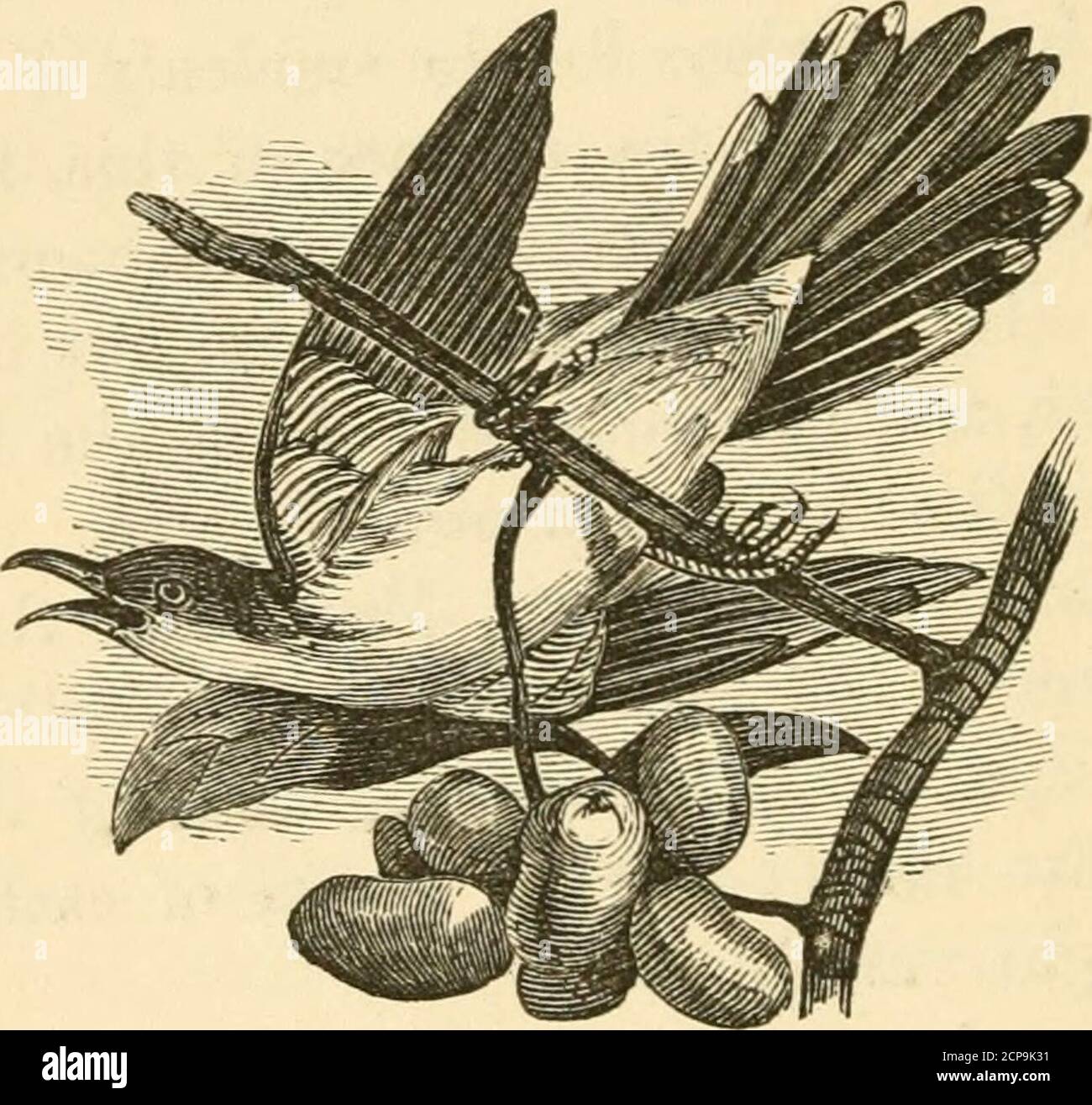. Our own birds : a familiar natural history of the birds of the United States . rbeing bright vermilion. We must here reluctantly close our observationson this interesting group, leaving it to our readers topursue the study, as inclination leads them, amono-the wild woods, where they will find some of the spe-cies abundant at all seasons of the year. The Cuckoo, although not strictly a climbing bird,belongs to the same order as the Woodpeckers, thearrangement of the toes and other characteristics 142 INSESSORES. assigning to it that position. We have several spe-cies in the United States, the

Image details
Contributor:
Reading Room 2020 / Alamy Stock PhotoImage ID:
2CP9K31File size:
7.1 MB (396.2 KB Compressed download)Releases:
Model - no | Property - noDo I need a release?Dimensions:
1628 x 1535 px | 27.6 x 26 cm | 10.9 x 10.2 inches | 150dpiMore information:
This image could have imperfections as it’s either historical or reportage.
. Our own birds : a familiar natural history of the birds of the United States . rbeing bright vermilion. We must here reluctantly close our observationson this interesting group, leaving it to our readers topursue the study, as inclination leads them, amono-the wild woods, where they will find some of the spe-cies abundant at all seasons of the year. The Cuckoo, although not strictly a climbing bird, belongs to the same order as the Woodpeckers, thearrangement of the toes and other characteristics 142 INSESSORES. assigning to it that position. We have several spe-cies in the United States, the most abundant beingthe Yellow-billed Cuckoo. This graceful and familiarbird, being of somewhat a quiet and retiring dispo-sition, frequents the most secluded and thickest partof the woods, where its low and simple notes of^ Cowe, cowe, coo, coo, coo, may be heard, utteredat first slowly, but gradually increasing in rapidityuntil the syllables run together. When it becomesmore clamorous than usual, it is said to be a sign ofapproaching rain, which in some places has conferred. Cuckoo. upon it the title of Rain Crow. The Cuckoos ofAmerica, unlike their European relative, invariablybuild their own nests and rear their own young, anddo not seem to be lacking in the least degree in astrong afiection for their progeny. The species nowbefore us has been accused of sucking the eggs of THE PARROTS. 143 other birds, which we regret to say does not appearto be an unjust charge; in other respects he certainlybears a good character as a quiet and harmless bird, rendering good service to the farmer by the dailydestruction of a great amount of noxious vermin.He often visits the orchard and garden, where hesometimes builds his nest. Being strictly a summerbird, he leaves the Northern and Middle States earlyin the Autumn, for a warmer climate, many passingthe Winter in Florida. The next and last division of the Scansores whichwe have to notice is the Parrots, well known for theirpeculiar form,